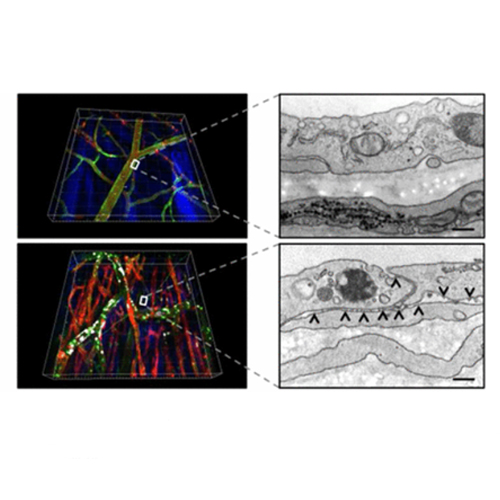The Endothelial Glycocalyx Controls Interactions of Quantum Dots with the Endothelium and Their Translocation across the Blood–Tissue Border
30-Jan-2017
ACS Nano, 11 (2), pp 1498–1508, DOI: 10.1021/acsnano.6b06812
ACS Nano, online article
Advances in the engineering of nanoparticles (NPs), which represent particles of less than 100 nm in one external dimension, led to an increasing utilization of nanomaterials for biomedical purposes. A prerequisite for their use in diagnostic and therapeutic applications, however, is the targeted delivery to the site of injury. Interactions between blood-borne NPs and the vascular endothelium represent a critical step for nanoparticle delivery into diseased tissue. Here, we show that the endothelial glycocalyx, which constitutes a glycoprotein–polysaccharide meshwork coating the luminal surface of vessels, effectively controls interactions of carboxyl-functionalized quantum dots with the microvascular endothelium. Glycosaminoglycans of the endothelial glycocalyx were found to physically cover endothelial adhesion and signaling molecules, thereby preventing endothelial attachment, uptake, and translocation of these nanoparticles through different layers of the vessel wall. Conversely, degradation of the endothelial glycocalyx promoted interactions of these nanoparticles with microvascular endothelial cells under the pathologic condition of ischemia–reperfusion, thus identifying the injured endothelial glycocalyx as an essential element of the blood–tissue border facilitating the targeted delivery of nanomaterials to diseased tissue.











